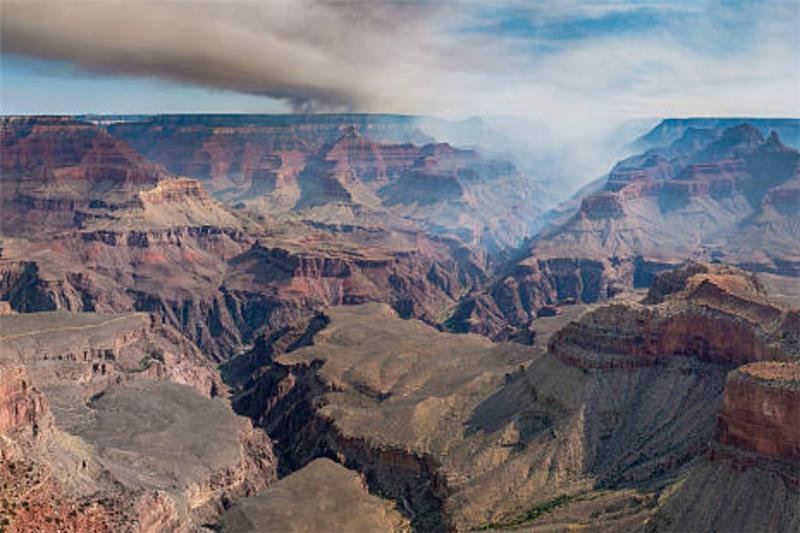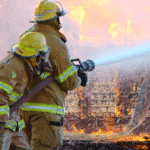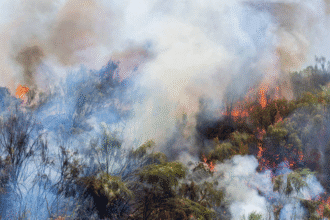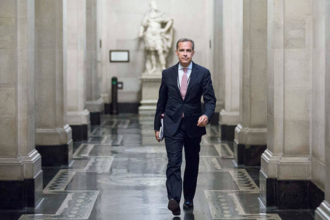A terrible wildfire in Arizona near the Grand Canyon has burned down many buildings, including the famous Grand Canyon Lodge. The lodge, which had been in business since the 1930s, was the only place to stay in the North Rim of the Grand Canyon National Park. The fire spread quickly through the area because of strong winds and dry weather, pushing officials to take extreme action.
The Dragon Bravo Fire and the White Sage Fire, which have burned tens of thousands of acres, are still a big worry. Recent updates indicate that neither fire has reached any level of containment. Because of the persistent threat from these flames, the North Rim of the Grand Canyon is now closed for the rest of the 2025 tourist season.
What Started the Wildfires in the Grand Canyon?
A lightning strike on July 4 started the Dragon Bravo Fire. Five days later, after a thunderstorm, the White Sage Fire started. Both fires have been hard to put out, especially because the winds have been so strong, reaching speeds of up to 40 mph (64 km/h). Even though the damage is already huge, officials in Arizona are still working hard to put out the fires.
The Grand Canyon Lodge, which is 8,000 feet (2,438 meters) above sea level, is one of the most important things that was lost. The lodge once housed a restaurant, a gift store, and a post office, all of which have now vanished. But no one was hurt because all personnel and visitors were quickly evacuated. Here is the link to our article on Wildfire Investigation Continues
How Bad Were the Fires?
The National Park Service (NPS) said that the Dragon Bravo Fire damaged between 50 and 80 buildings, including offices and visitor centres. The fires have created a lot of trouble, especially for tourism, which is one of the area’s main sectors.
Also, a deadly chlorine leak at a nearby water treatment plant caused emergency personnel to leave some regions, showing how the flames are putting both residents and those in charge of the crisis at risk.
What are officials doing about the wildfires?
Local and state officials have been paying a lot of attention to the wildfires. Governor Katie Hobbs of Arizona is worried about how the federal government is dealing with the Dragon Bravo Fire, especially because it was handled poorly as a controlled burn during the hottest time of the summer. In a post on social media, she demanded increased monitoring and an investigation into the federal government’s handling of this wildfire.
The U.S. Interior Department, on the other hand, has defended how it handled the fire. A spokesman for the department, Elizabeth Peace, asserted that the department’s wildland fire experts distinguish between planned burns and natural wildfire hazards. She told the public that the Interior Department takes the threat of wildfires very seriously. Here is the link to our article on Wildfire Crisis Intensifies
What will the shutdown mean for tourism in the Grand Canyon?
In 2024, around five million people visited the Grand Canyon, making it one of the most popular national parks in the United States. The North Rim will be closed for the rest of the 2025 tourist season, affecting local tourism. The destruction of the historic lodge makes things even worse because it was a popular place for people to see the Grand Canyon’s majesty up close.
Tourists who had intended to visit over the rest of the year will now have to change their plans. They may choose to stay somewhere else or go to the South Rim, which is still open.
Conclusion: Can the Grand Canyon get better after this tragedy?
The demolition of the Grand Canyon Lodge is a sad loss for the park and the rest of Arizona. The ongoing Grand Canyon wildfire and the closure of the North Rim for the season raise significant concerns about future fire management and the resilience of landmarks like the Grand Canyon. Despite the fires remaining largely uncontrollable, the situation demonstrates the urgent requirement for rapid response and effective firefighting strategies to protect not only human lives but also the historical significance and infrastructure of America’s national parks. Recovery from this disaster will require substantial efforts from both local and federal agencies. Communities across the country will also need to rally support for recovery efforts.








